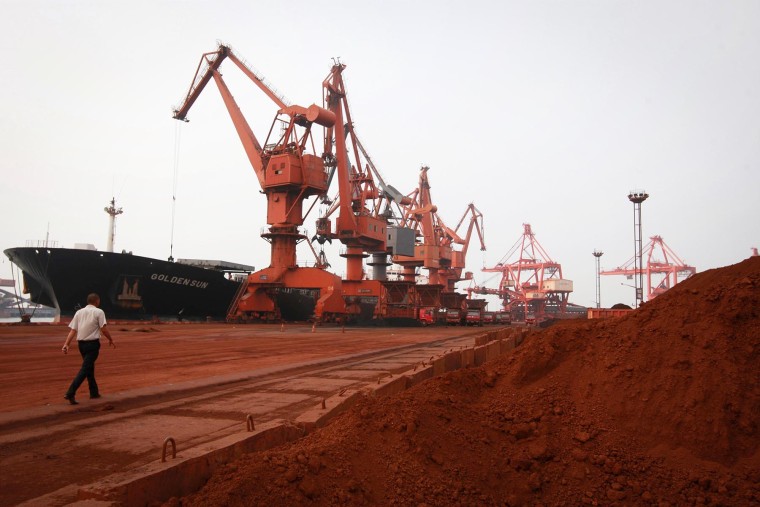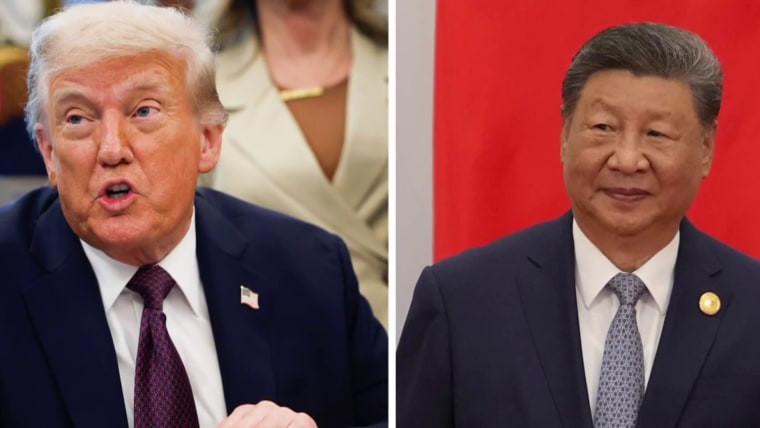President Donald Trump said Friday that he would be hitting Chinese goods with a 100% tariff “over and above any tariff that they are currently paying,” a move that reinvigorates a once-cooling trade war between the world’s largest economies.
In a Truth Social post Friday afternoon, Trump said the new tariffs are in response to moves by China to institute export controls. On Thursday, China announced a series of new limits on the trade of rare earth minerals and technologies related to them.
Earlier on Friday, Trump had threatened a “massive” increase in tariffs on Chinese products, rocking markets and adding a fresh dose of uncertainty into trade relations between the world’s largest economies.
China has become “very hostile” on trade matters, Trump said in the earlier Truth Social post. “I was to meet President Xi in two weeks, at APEC, in South Korea, but now there seems to be no reason to do so,” Trump wrote. The leaders were expected to announce a full-fledged trade deal at the meeting.
Trump added on Truth Social that the higher tariff would be enforced starting Nov. 1 “or sooner, depending on any further actions or changes taken by China.”
Currently, the U.S. has tariffs of about 40% on Chinese goods.
Trump also said the U.S. would begin to put export controls “on any and all critical software.”
A spokesperson for the Chinese Embassy in Washington, D.C., did not immediately respond to a request for comment on Trump’s post.
The announcements from China and Trump were a sudden escalation in a trade war that had appeared to be cooling off. The perceived certainty of a forthcoming China deal had been pushing stocks higher. But the president’s Truth Social post Friday immediately sent U.S. stocks lower, with the S&P 500 falling 2.7% on the day.
The Nasdaq, which contains many tech companies that do business in China, slid more than 3.6%. The Dow Jones Industrial Average, which tracks the stock prices of 30 large companies, fell almost 900 points, or about 1.9%.

China’s new trade regulations require foreign companies to get special approval to export items that contain even small traces of rare earth elements sourced from China. These critical minerals are needed in a broad range of products, from jet engines, radar systems and electric vehicles to consumer electronics including laptops and phones.
China and the U.S. have held more than three rounds of trade talks this year, with rare earths, TikTok and tariffs featuring in the discussions. After talks in Geneva in May, the administration said China had decided to ease up on rare earth export controls.
In June, the two sides met again in London, where they announced yet another agreement on the issue. After those talks, the U.S. said it expected the issue to be “resolved.”
In a Truth Social post after those negotiations, Trump said that “our deal with China is done.”
“Full magnets and any necessary rare earths will be supplied, up front, by China,” he added.
“They were kind of releasing them, but it was going a lot slower than some companies believed was optimal,” National Economic Council Director Kevin Hassett said of China’s rare earth exports at the time.
But U.S. companies have said throughout the talks that the flow of rare earth exports from China has been staggered at best. China dominates the supply of these critical minerals, leaving companies few other options.
A full-fledged trade deal with China remains elusive despite the extensive negotiations.

